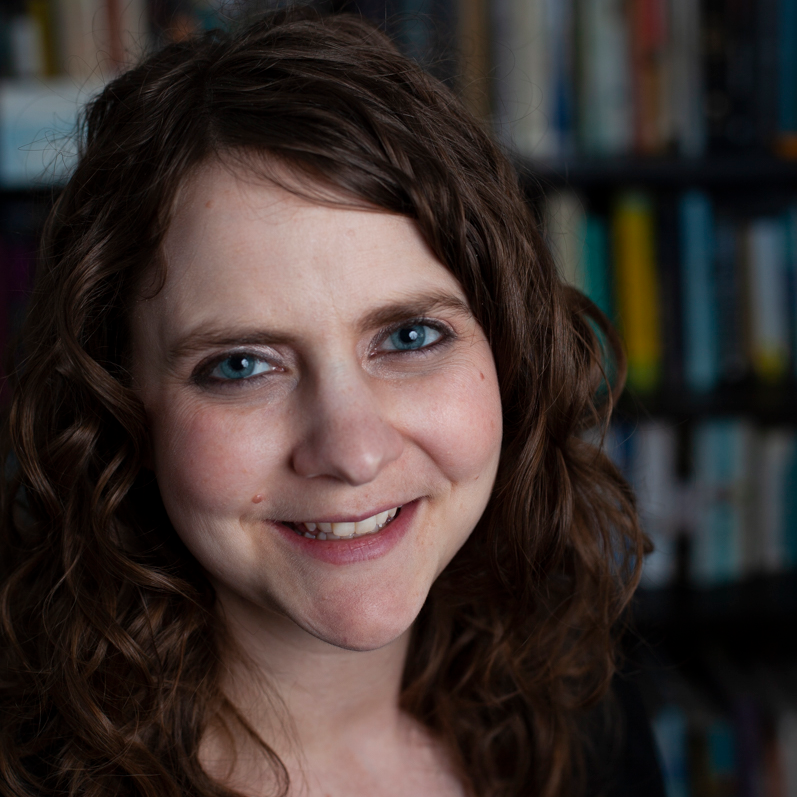An interview between Arlene Flancher and Grace Duddy Pomroy.
For our readers who don’t know what Funding Forward is, can you give us a short description?
Sure! Funding Forward is the process of finding more economically sustainable models for ministry that emerge organically from the congregation’s mission. People often think funding forward is about “saving the church” or just bringing in more money for money’s sake to line the church’s pockets. In fact this process is a lot more about mission than it is about money.
When did you become interested in Funding Forward?
Before coming to Luther Seminary I worked for Portico Benefit Services, the benefit ministry of the ELCA. During my time at Portico, I heard from a lot of church leaders who said their congregations simply couldn’t afford our benefits any more. So, they would slowly reduce these benefits over time, cut them entirely, or strongly suggest that a pastor go on their spouse’s insurance. I also heard from pastors who were seeking part-time calls and hired for half-time calls, then being asked to work 40+ hours per week for a half-time wage in the name of ministry. It was clear to me that the current economic system of having a full-time pastor with full benefits was becoming less and less feasible for many congregations. While I think congregational leaders were doing the best they could to find ways to cut the budget and to get as much ministry as possible from a half-time salary, I also knew that this series of small cuts was alienating clergy and that it could eventually lead to congregational closure. I wondered if there might be a way to address the root cause of these concerns, the church economic system as a whole, rather than continuing to put bandaids over the problems in the hopes that they might heal on their own.
Can you share a little bit about how you collected data during the Funding Forward research project?
In the fall of 2022, we surveyed over 100 congregations in the U.S. and Canada who have experimented with more economically sustainable models for ministry that are aligned with God’s mission for their community. I shared some of my “ah ha” moments from the survey findings in this article from Feb. 20 and this one from Feb. 27. This winter and spring, my research team and I conducted interviews with key ministry leader(s) and a group of lay participants from 12 of the surveyed congregations. Our goal in both the survey and interviews was to answer two primary questions.
- What conditions are necessary for a congregation to shift its economic model?
- What practices might congregation leaders use to facilitate that shift?
What are some stories from the interviews that will stay with you?
In an interview I did with a small, rural congregation. During the lay group interview, I could sense tension in the room. A few years ago the congregation had transitioned from a full-time to a half-time pastor. While the congregation’s first half-time pastor gave them full-time ministry for the price of half-time, their new half-time minister was setting up clear boundaries around his time and inviting the lay members of the congregation to take ownership of their ministry in new ways.
- One interviewee was really taken with this idea and started exploring new opportunities to connect with the surrounding community and partner with different organizations to find a more sustainable future.
- Another interviewee was less optimistic, sharing that every time the church had a good idea the surrounding community seemed to steal it and secularize it. For this member, there was no hope for partnership.
I watched as the more excited member empathized with the more pessimistic one while also naming the hope that she was seeing. She shared: “we shouldn’t look at the other parts of the community as competition. We should look at it as, ‘How can we all work together to make our whole town?’ Everybody has gifts, each different organization has a different gift, and our Jesus has given us all gifts. So why can’t we combine those gifts? … [I believe the town is] looking for something and we can be a partner with that and not in competition.” This conversation reminded me of the importance of lay people who are willing to step in and lead in new ways. Often, they can have the greatest influence and impact in getting other lay members on board. Similarly, this congregation was looking to open up their building to rent space to the community; they would never be successful at renting space if they saw these renters as competition, not partners.
I also had the opportunity to talk with a lay group from a small, new start ministry in active discernment about who God is calling them to be. A key part of their mission is cultivating a network of 23 partners who rent their building, as well as embodying hospitality for all who enter their space. Given that the group who participated in the lay interview included at least one rental partner who wasn’t religious, I wondered how they might receive the final question of the interview: “Where did you see God in the process of creating and/or shifting the financial model?” Surprisingly, it was a partner from a non-religious organization who spoke up first. He spoke about the way he experienced God in the first collective meeting of the building partners in two ways. First – through a spiritual meditation ritual that started the meeting and second, through the partners’ conversation as a whole. He said,
“And being someone who grew up in the church and doesn’t attend a church regularly now but tries to stay in touch with spiritual communities, it felt like healing for me. And I think that’s a cool thing that happens for the people involved – whether they’re in a choir or attending a concert or just coming for a workshop or something. It’s the less visible parts. It’s not the cross on a building, and it’s not a Bible in someone’s hand. It’s nothing like that. And that’s really what most people I know nowadays are connecting to. [It’s the spirit of the place.] It’s subtle and not labeled.”
He also said, “It feels like that warm hug from the auntie that’s going to provide you some tea and a biscuit or something. That energy is really important, and most venues, most churches don’t have that actually. It’s somewhat rare, unfortunately.”
He appreciated that this church embodies hospitality and a calm spirit without asking every partner to share their same view and beliefs. This partner uses the sanctuary space as a concert venue. While his organization is not religious, this is a space where he felt that he and the concert attendees could engage in the spiritual practice of experiencing music together.
In a context where so many are done with or disconnected from religion, I wonder what it looks like for the church to be a place of peace and hospitality where people can experience God together in new and old ways?
What’s one thing you learned that surprised you?
Funding Forward is deeply rooted in stewardship and generosity is a key practice in this work. I have been passionate about stewardship since 2010 when I started at Luther Seminary. I believe stewardship is about using everything God has entrusted to our care to love God and our neighbors, and generosity is an important (although certainly not the only way) we can live into our call as stewards. I have often worried that this focus on funding forward would take me away from my passion for stewardship ministry. And yet, the interviews reminded me that this work is deeply rooted in stewardship. I saw how congregations were living into the three movements of stewardship: seeing the ways God had come down to them in love, looking in to identify the unique assets God had entrusted to their care, and looking out to see how God was inviting them to use these assets in new ways – creating sustainability not only for them but their neighbors.
Similarly, generosity was a key theme that came up in the interviews. We heard about:
- A working class congregation that raised $1.4 million dollars (just from their own congregation) to transform their building and create affordable housing
- A landlord who gave part of his building away to a congregation to create a community center for trans and gender-diverse people to gather, grow, and flourish
- A large, anonymous donation that was used to create a social enterprise for nourishing Christian leaders and igniting communities of faith by setting an inclusive table of belonging and developing resources for a fresh, bold, and faithful witness in the world
Generosity was not a side project. It was a central component to making these ministries happen.
Based on what you learned in your interviews, how would you answer your two primary research questions?
First, I’ll talk about the conditions necessary for a congregation to shift its economic model. I went into this project believing that there would be parameters about how much money or what assets a congregation might need to have to get this process started. I didn’t find that to be the case. In fact, we talked to a few congregations within a year from closure when they shifted their model. While finances may have been one motivator for this work and it was sometimes what pushed the congregation to make a bold change, it was usually not the primary motivator. Overall, the congregations we interviewed had these things in common:
- They had a clear understanding of God’s mission for their congregation in this time and place.
- They had listened to the people God had called them to serve outside of the four walls of their congregation and had an understanding of their needs.
- They had a sense of the unique assets God had entrusted to their care that they might use to both live out God’s mission and meet these needs. This might be a building or a segment of church property but it could also be the abilities of people in their community (farmers, entrepreneurs, etc.).
- They were open to change and were emboldened to take risks.
As far as the things that helped them to actually make this shift to a new model, these were the four that came up most often:
- a network of partnerships with organizations outside of the congregation, and community relationships
- trusted pastoral leadership
- empowered lay leadership
- generous support in time, talent, and treasure
Outside of these four, my research team was surprised by how much discernment, communication, transparency, and consensus-based leadership came up throughout our conversations. This was not something a small group engaged in on the side, they were intentional about bringing the whole congregation along every step of the way. Similarly, I was struck by the deep spiritual nature of this work. There were 20 spiritual practices (prayer, Bible Study, listening, naming God’s action, etc.) named throughout the interviews and it was these spiritual practices that kept the congregation going when they encountered challenges.



